 Cladistics is the study of the family relationships between different classification groups. A clade is a group containing all the descendants of an ancestor species. A variety of evidence is used to build cladograms and this topic looks at this data and some of the difficulties of interpretation.
Cladistics is the study of the family relationships between different classification groups. A clade is a group containing all the descendants of an ancestor species. A variety of evidence is used to build cladograms and this topic looks at this data and some of the difficulties of interpretation.These slides summarise the essential understanding and skills in this topic.
They contain short explanations in text and images - good revision for all students.
Read the slides and look up any words or details you find difficult to understand.
Summary list for topic 5.4 Cladistics
- A clade is a group of organisms that have evolved from a common ancestor.

- Evidence for species of a clade can be
- the base sequences of a gene or
- the amino acid sequence of a protein.
- There is a gradual accumulation of differences and a positive correlation between the number of differences between two species and the time since they diverged from a common ancestor.
- Cladograms are tree diagrams that show the most probable sequence of divergence in clades.
- Evidence from cladistics has shown that classifications of some groups based on structure did not correspond with the evolutionary origins of a group or species.
- Traits can be analogous (due to convergent evolution) or homologous (inherited from a common ancestor).
Skills (can you ....)
- Interpret and deduce relationships from cladograms including humans and other primates.
- Appreciate that in the light of new evidence some cladograms are changed.
- For example the reclassification of the figwort family using evidence from cladistics.
Mindmaps
These diagram summaries cover the main sections of topic 5.4 Cladistics.
Study them and draw your own list or concept map, from memory if you can.
Exam style question about cladograms
The interpretation of a cladogram is an important skill for this topic.
Answer the question below, on a piece of paper, then check your answer against the model answer below.
The simple cladogram below shows a selection of organisms from The tree of life, iTOL.
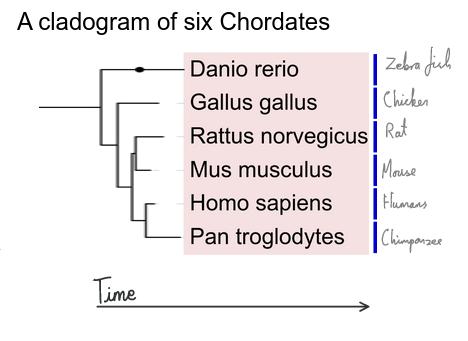
Deduce which animals are most closely related and most distantly related to the mouse (Mus musculus)[2]
....................................................................................... ............................................................................
....................................................................................... ............................................................................
Explain how evidence from DNA sequences can be used to construct a cladogram like this. [2]
....................................................................................... ............................................................................
....................................................................................... ............................................................................
Click the + icon to see a model answer.
Multiple choice questions
This is a self marking quiz containing questions covering the topic outlined above.
Try the questions to check your understanding.
START QUIZ!
Drag and drop quiz
This exercise will help you to explain classification methods.
Biologsts classify organisms into taxa and investigate evolutionary relationships. There are different methods for achieving this, morphological or biochemical.
These animals have wings (two only in the adult phase), how important is this in classifying them into taxa?



Humans and chimps share about 98.8 percent of their DNA. Humans and domestic cats share about 90% of their DNA.
How important is this fact in classifying humans chimpanzees and domestic cats into taxa?
Drag and drop the correct term or phrase into the gap to outline natural classification and cladistics.
base divergence greater Convergent less physical different ancestor amino evolutionary structures reclassification Divergent declassification sequences
Natural classification can be based on features (morphology) or cladisitics based on DNA or protein acid . These two methods do not always concur.
Natural classification taxa based on physical similarities do not indicate relationships, cladograms show the most probable evolutionary from a common based on differences in DNA base or amino acid sequences.
The the difference in base or amino acid sequences, the further apart the organisms will be placed on a cladogram.
evolution may give rise to similar , giving a morphological similarity for organisms that arose from evolutionary pathways.
Analysis of cladograms has led to the of some species.
Cladistics is a form of classification base on DNA and protein analysis that demonstrates evolutionary divergence.
Everyone needs a bit of fun while they revise. Try this Cladistics card matching game. Can you reach the leader board?
How much of Cladistics 5.4 have you understood?







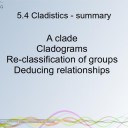
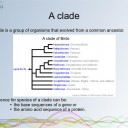
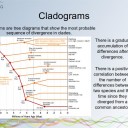

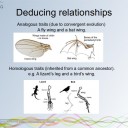
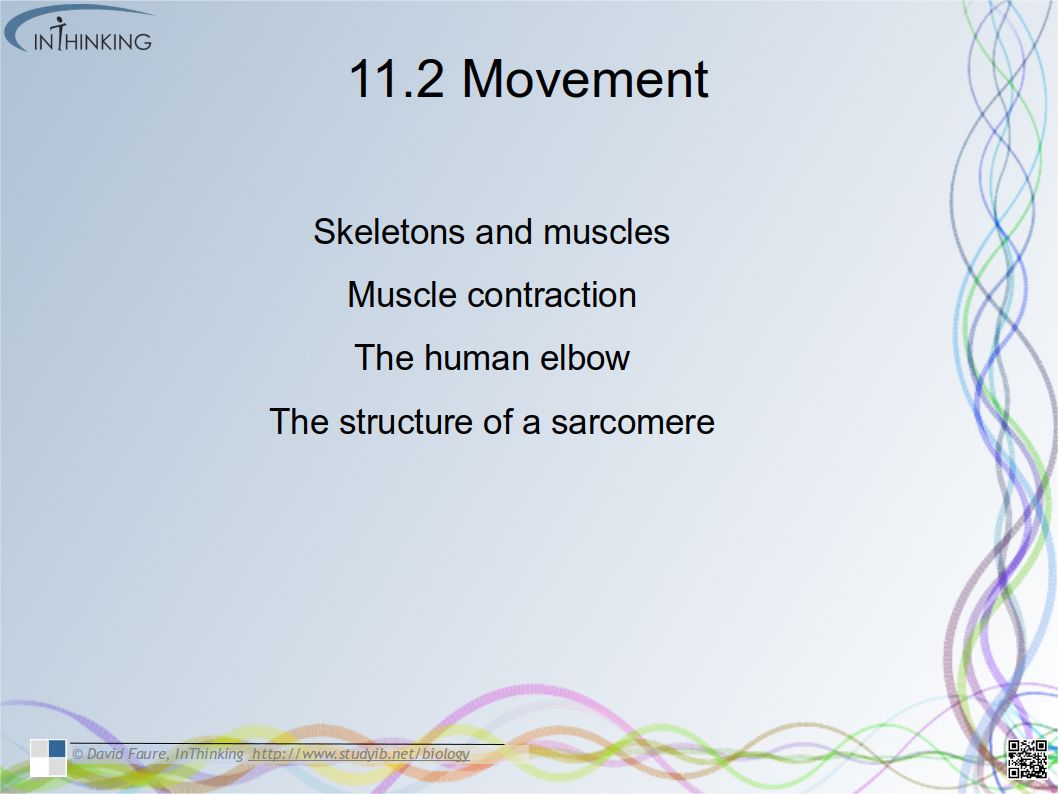
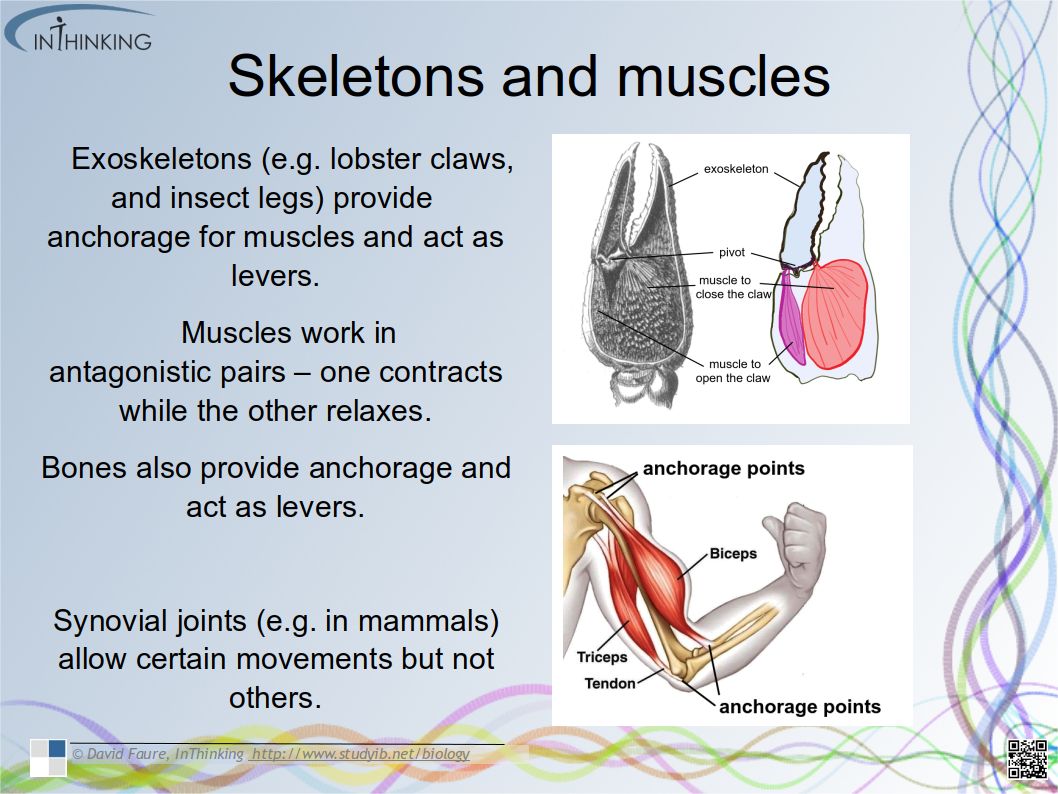

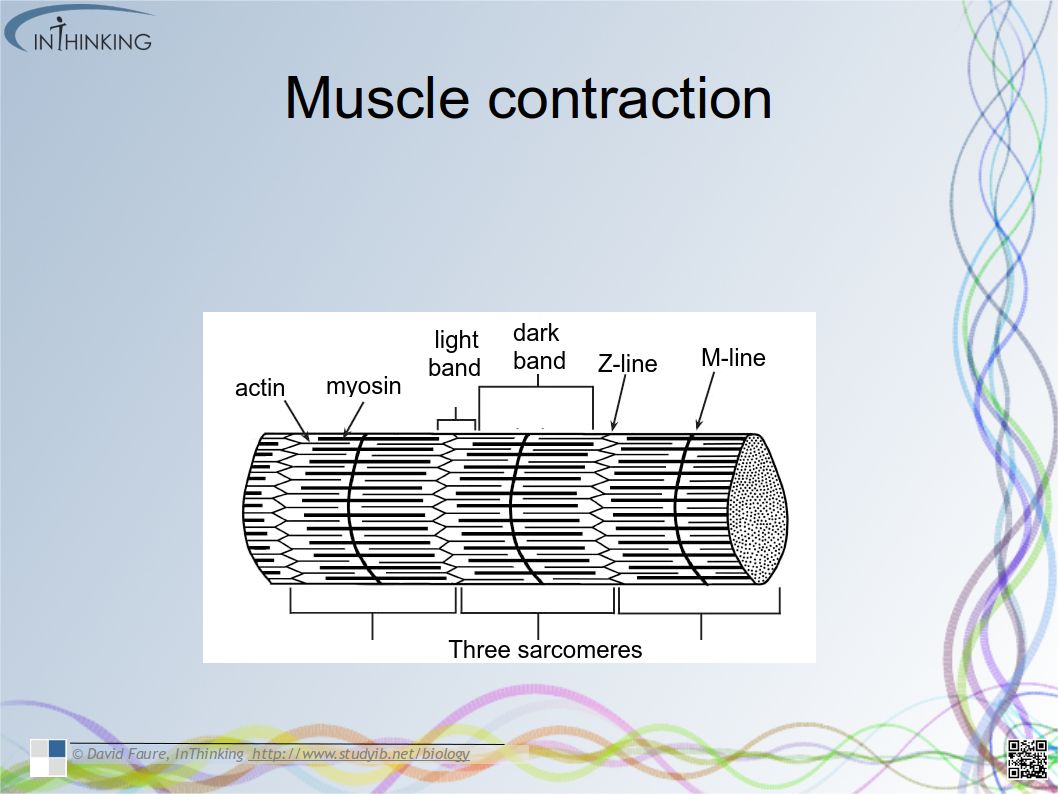

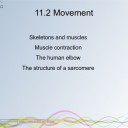
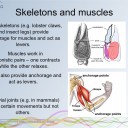
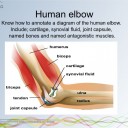
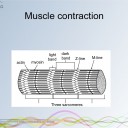
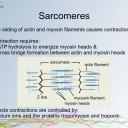

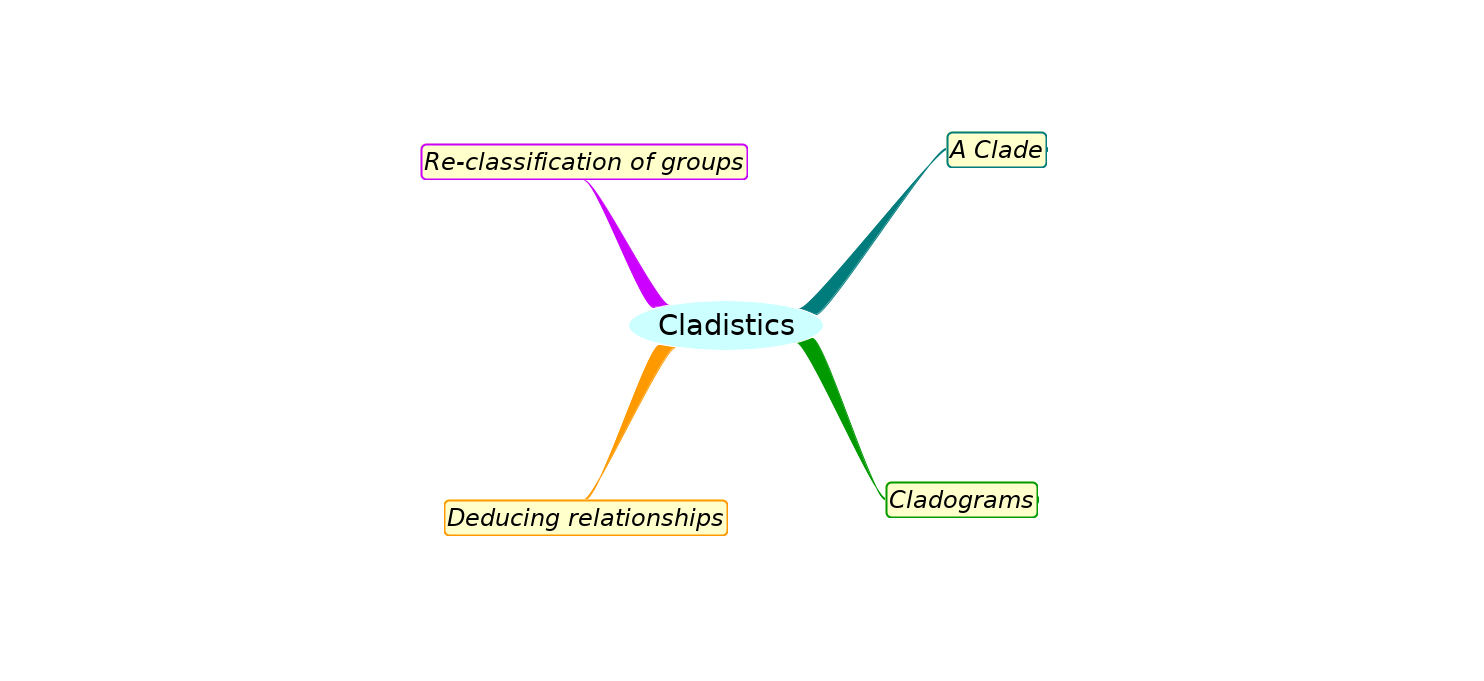


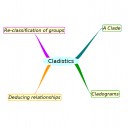


 Twitter
Twitter  Facebook
Facebook  LinkedIn
LinkedIn